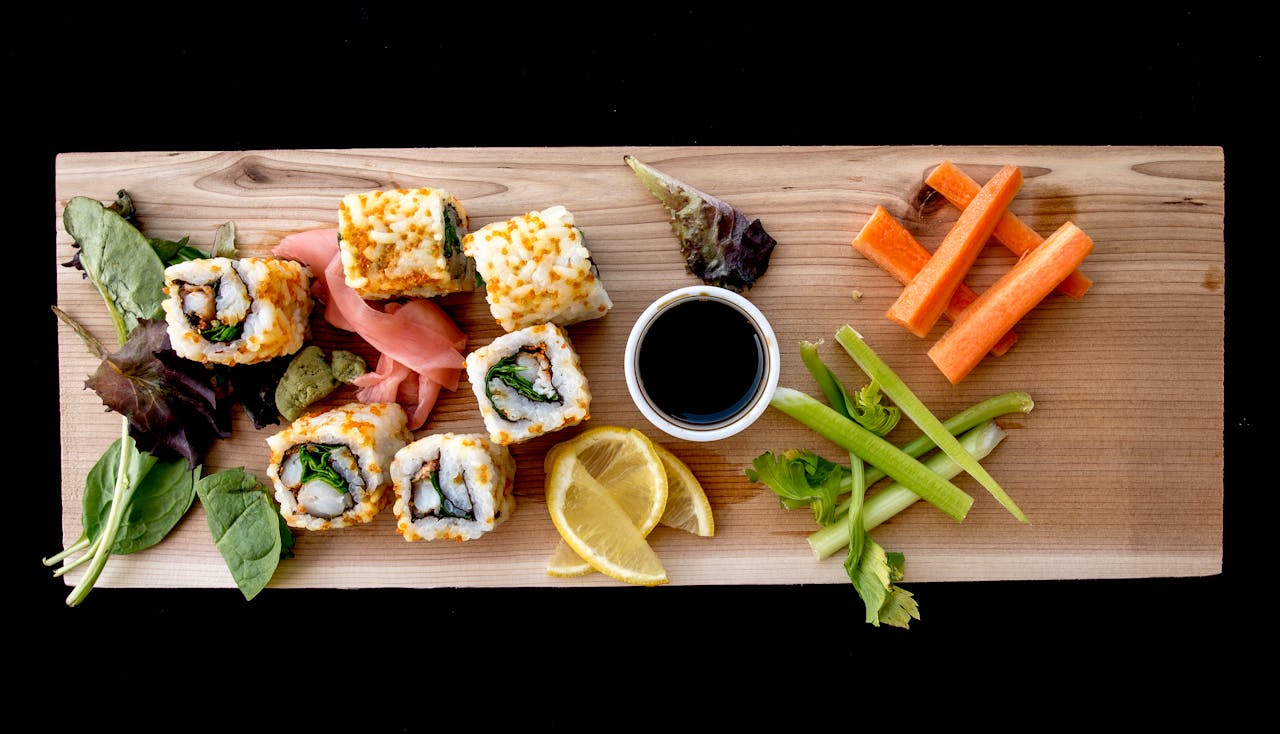Table of Contents
Japanese cuisine, with its emphasis on the intrinsic tastes of its ingredients, is celebrated for its subtlety and depth. Central to this culinary tradition are the condiments and spices that enhance and complement the natural flavors of food. This guide explores the essential seasonings that define Japanese cooking, offering a window into the rich tapestry of tastes and traditions that make Japanese dishes uniquely delightful.
Soy Sauce (Shoyu): The Quintessential Japanese Condiment
Soy sauce, or shoyu, is arguably the backbone of Japanese flavoring, used in everything from marinades and dips to soups and stews. Its salty, umami-rich profile can transform a dish, bringing depth and complexity with just a few drops. Soy sauce is produced through fermenting soybeans and wheat, resulting in a versatile condiment that ranges in flavor from light and sweet to dark and robust.
Miso: The Traditional Japanese Paste
Miso, a paste made from fermented soybeans, salt, and koji (a type of fungus), is another cornerstone of Japanese cuisine. The fermentation process can last from a few months to several years, producing a variety of misos that vary greatly in flavor, color, and texture. Miso is used in soups, sauces, and as a marinade, imparting a savory, umami depth that is unmistakably Japanese.
Wasabi: The Fiery Japanese Flavour
Wasabi, known for its sharp, pungent heat, is often associated with sushi and sashimi but is used more broadly to add zest and depth to many dishes. Genuine wasabi, derived from the rhizome of the Wasabia japonica plant, offers a unique heat that enhances without overpowering, quickly dissipating in the mouth to leave a refreshing aftertaste.
Rice Vinegar: The Subtle Acidity
Rice vinegar, milder and sweeter than other vinegars, plays a crucial role in Japanese cooking. It is used to season sushi rice, dress salads, and pickle vegetables, adding a light acidity that brightens flavors. Rice vinegar is an essential ingredient in dishes that showcase the Japanese mastery of balance and subtlety in flavors.
Mirin: The Sweet Sake for Cooking
Mirin, a sweet rice wine, is used for its ability to add sweetness and depth to sauces, glazes, and broths. Its high sugar content and lower alcohol percentage make it a staple in Japanese kitchens, where it complements soy sauce and miso, contributing to the layered complexity of Japanese dishes.
Sansho Pepper: The Citrusy Bite
Sansho pepper, derived from the Japanese prickly ash, is less about heat and more about its distinctive citrusy, tingling effect on the palate. It is often used to season grilled meats, fish, and in spice blends, adding a fresh, zesty note that is both surprising and invigorating.
Seaweed: The Ocean’s Umami
Seaweed, in its various forms—nori, wakame, kombu—brings the essence of the ocean to Japanese cuisine. Rich in umami and minerals, seaweed is used to wrap sushi, flavor broths, and add texture and taste to salads. Its versatility and health benefits make it a beloved ingredient in japanese restaurants.
Conclusion
The condiments and spices of Japanese cuisine are integral to its unique flavor profile, offering a blend of tastes that is subtle yet profound. From the umami-rich soy sauce and miso to the pungent heat of wasabi and the sweet depth of mirin, these seasonings are testament to the sophistication and elegance of Japanese cooking. Understanding and appreciating this array of flavors opens up a world of culinary possibilities, inviting food lovers to explore the rich traditions and innovative spirit of japanese dishes.








